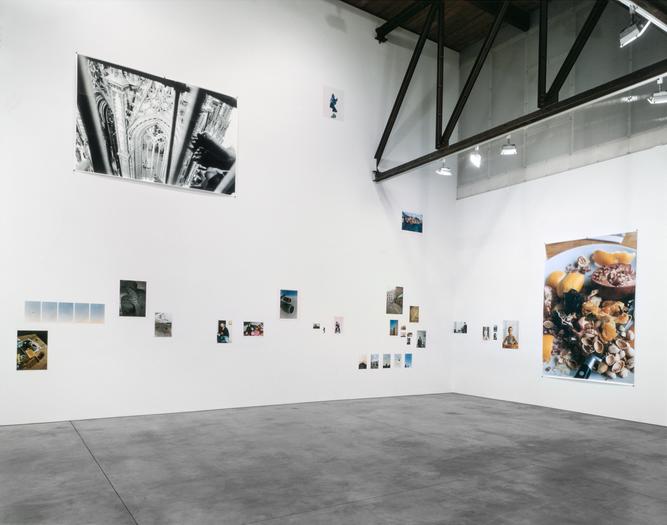Wolfgang Tillmans
October 23 – November 28, 1998
Main Gallery
The following is an excerpt from the essay Lost and Found by David Deitcher in the new book: Wolfgang Tillmans: Burg, published by Taschen (scheduled to be released in the U.S., October 1998). Courtesy of Benedikt Taschen Verlag.
"Confronted by a wall of his photographs, or by the sequences of images [Wolfgang Tillmans] has published in magazines and books, I want to find the common denominator, to make sense of the whole. In short, I am possessed by a powerful desire to know things. In a situation like this, I work like an amateur detective, combing through evidence in an effort to uncover meaning. I look for patterns in the formal correlation between pictures that otherwise appear to have nothing in common. I consider hierarchies of scale and other ways of granting priority to some pictures over others. Given a profusion of images, I look for the links between them: are there, I wonder, individuals who appear in more than one picture? And if so under what circumstances? What geographical locales do the pictures represent? And what social milieus? Even while attending to the beauty and plainness of the everyday objects that Tillmans has singled out for posterity, I look for the significant detail, as if it might provide me with access to domestic spaces and private rituals. Finally, I wonder, does the whole somehow add up to something greater than the sum of its parts?…
If Tillmans' photographs suggest any kind of narrative it would be the chronicle. But for a number of reasons, the kind of chronicle his practice suggests is perhaps the memoir more than a journal, and certainly more than photojournalism and documentary. Eager to classify the work of this young photographer, early observers quickly noticed the prevalence of young people in his seemingly spontaneous photographs and labeled Tillmans a documentarian of his generation. The truth was more complex, and not just because of the extent to which Tillmans was actually collaborating with his friends to ensure that they properly "impersonated" the idea of themselves that they and Tillmans were interested in seeing. In fact, Tillmans was adjusting the sober code of documentary in order to register in his photographs a measure of emotional engagement with his youthful subjects who often displayed self-conscious, awkward and exhibitionistic modes of self-presentation with which he identified. Tillmans specificity resents the wholesale dismissal of this aspect of youth as only a "phase". In this regard it is interesting that he has noted the use of the same form of patronizing devaluation in relation to his experience of growing up gay…
Since the mid-1990's, Tillmans has moved on somewhat from his former tendency to focus on the formation of the youthful self in the city square, the dance club, and the crash pad. Intimacy and reflectiveness which were always implicit in his work have become explicit as he has shifted his focus to describe what might in every sense be termed "interiority." To be sure, Tillmans has by no means constructed a vision of a literally sedate or securely settled existence. There has always been visual evidence of travel in his photographs, and these traces have lately become even more apparent. But only now have they clearly coalesced to form a visual trope, a metaphor in which the photographer's restlessness takes on the significance of a search – whether for intimate contact and meaning, or for rare experiences of transport, by which I refer to transcendence."

